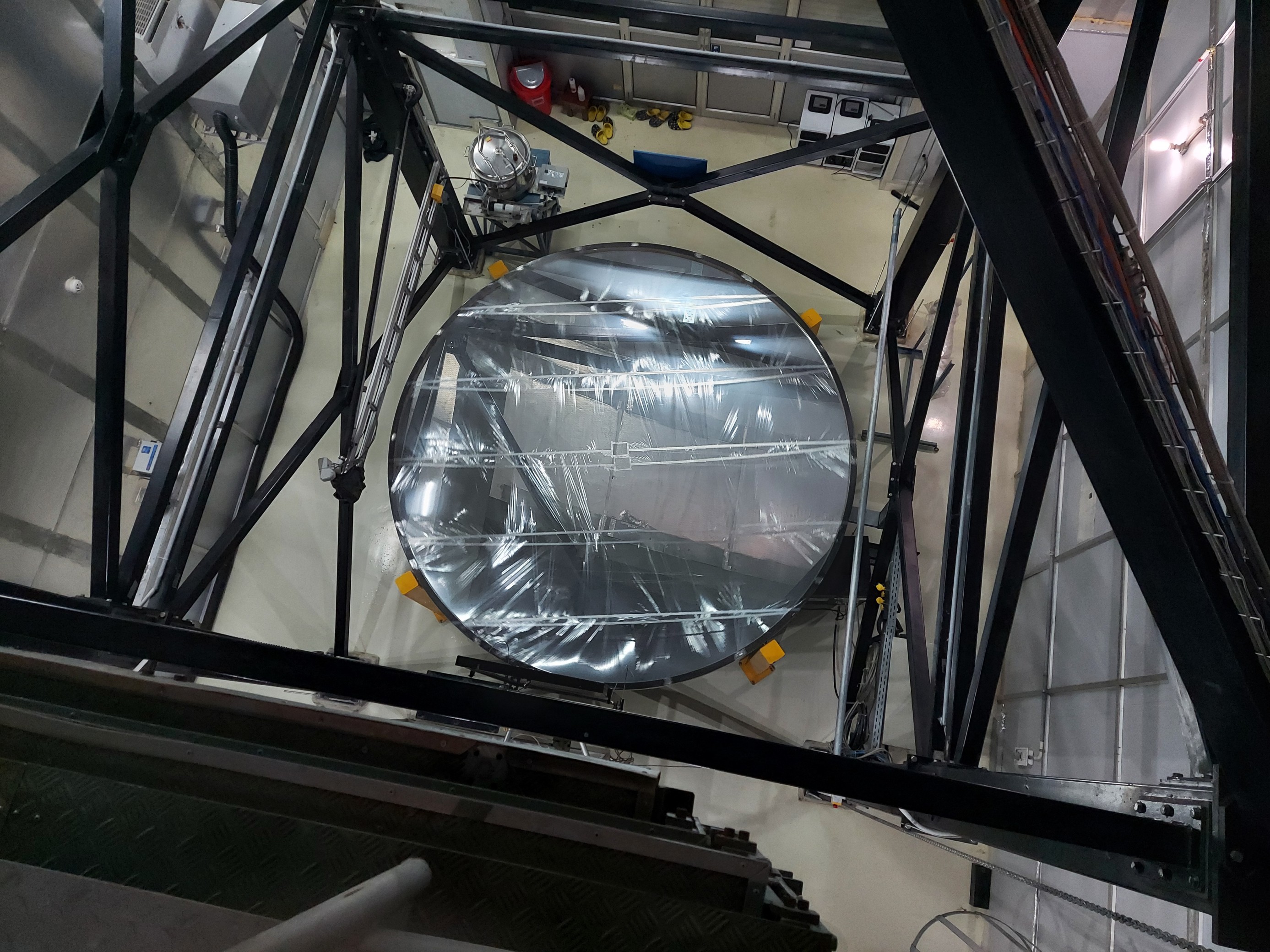ABOUT ILMT
ABOUT ILMT
The ILMT, located in the Devasthal Observatory campus of ARIES, results from an international collaboration between institutes from India, Belgium and Canada. The telescope is designed to perform deep photometric and astrometric variability surveys, and to detect transients. It achieved the first light on the 29th of April 2022 and, following a series of tests and corrections, was formally inaugurated on the 21st of March 2023. The telescope is now performing science observations.

The technology behind liquid mirror (LM) telescopes is relatively simple. The primary mirror of the telescope is a rotating container with a highly reflective liquid (mercury) in it. The surface of the spinning liquid takes the shape of a paraboloid. Three components are required:
- A dish containing a reflecting liquid metal,
- An air bearing on which the LM sits, and
- A drive system.
An air compressor is needed to operate the air bearing. However, to avoid any interruption of the mirror rotation (cf. during the maintenance of the compressed air system), it is best to have two parallel air systems. Therefore, we have installed two Air compressors, both of which are of ‘High-quality rotary screw air compressor’ with full PLC controller and can deliver free air at pressure as high as 10-13 bar, needed to operate our air bearing systems.
The mercury mirror of the ILMT has a 4-meter diameter with an aperture of f/2.3 defined by the rotation speed. A 4Kx4K CCD camera manufactured by 'Spectral Instruments' and which can operate over the 4000 to 11000 Å spectral range (SDSS filters g', r', i' are available) is positioned at the prime focus of the ILMT at about 8m above the mirror. As liquid mirror telescopes cannot be tilted, they cannot track as conventional telescopes. Tracking is done artificially using Time Delay Integration (TDI) mode, in which the CCD electronically transfers its charge from one row to the next. The mirror, being parabolic in shape, requires an optical corrector to get a flat focal surface of about half a degree in diameter. All these elements are mechanically coupled by an external structure and a spider.
The ILMT monitors a strip of the sky of approximately 22 arcminutes centered at the declination of +29o21'40". It accesses about 40 square degrees of sky every night. The TDI technique provides an effective exposure time of 102s, allowing the ILMT to reach a limiting magnitude of 22mag in the i' band in a single scan. The exposures from multiple nights can be combined to probe even fainter objects. In contrast, image subtraction techniques are also applied to detect transient objects (supernovae, gamma-ray bursts, micro-lensing events, etc).

